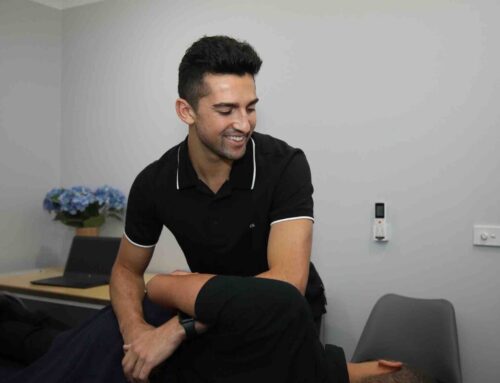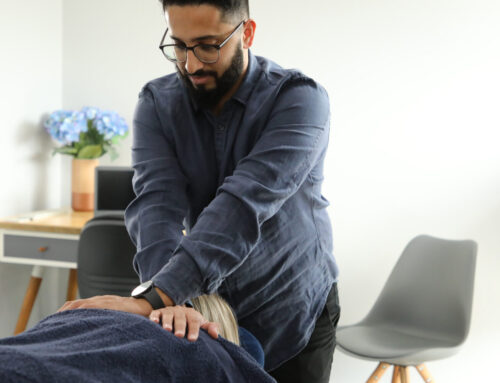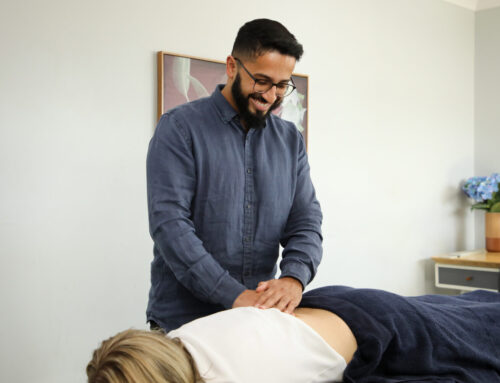Our society is becoming more and more sedentary everyday. Whether it’s the morning and evening commutes, working at a desk, watching TV or playing on our endless list of electronic devices, we spend far too long sitting down. Depending on how you sit, certain muscles and joints can become tight and stiff over time, creating muscular imbalance which may lead to pain and discomfort. Common areas for this to occur are the upper and lower back and the neck.
When we’re sitting at a desk, reading a book or looking at our phones we’re naturally drawn to whatever it is we’re paying attention to; we want to be closer to the screen or book so that we can take in as much information as we can. When this happens, the muscles at the front of the neck and in your mid-back ‘go to sleep’ as they’re not being used, causing them to weaken over time. The opposite happens at the back of your neck and chest – these muscles are overused and become tight in response.
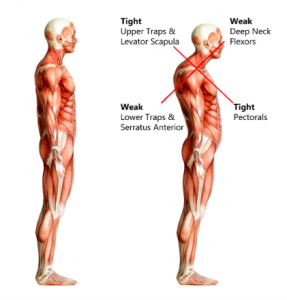
The lower back can undergo similar changes. As you can see below, the gluteal and abdominal muscles can become weak and the muscles at the front of the hip and lower back become tight.
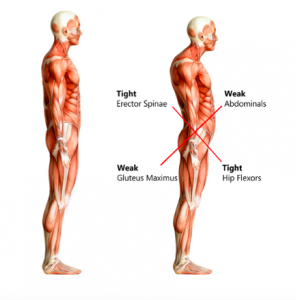
You might think that these tighter, overused muscles are the ones that need to be stretched, massaged and manipulated and you’d probably be right. However, the weaker muscles still need some attention and need to be strengthened. Often if all areas aren’t addressed, then the chances of having a flare up or recurrence of your pain are increased. This is why your osteopath at Pakenham Osteopathy will give you exercises to do at home or in the gym and it’s often the reason that appointments extend beyond just resolving your pain; we want you to be stronger and healthier than you were before you even started to experience pain.
What Can Osteopathy Do For You?
Qualifications & Training
Osteopaths have 5 years of University training under their belt where they learn to master the difficult task of assessing, diagnosing, treating and managing musculoskeletal injury.
Thorough History & Assessment
An initial consultation with our osteopaths are 60 minutes long to ensure your story is heard. Every person’s pain is different, so our osteopaths take the time to understand your history and the circumstances surrounding your pain. Our questioning is thorough, ensuring we can tailor an efficient assessment to pinpoint the cause of your pain and develop an individualised management plan based on your goals.
Hands On Treatment Approach
Pain is often the most common reason people seek osteopathic treatment. Therefore, there’s no surprise that osteopaths continue to employ a hands on approach to help decrease pain and get you moving better. There are a vast range of hands on techniques that an osteopath will use including:
- Soft tissue massage & stre
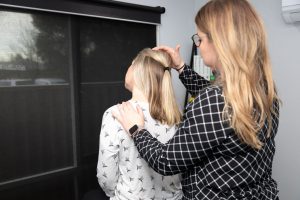 tching
tching - Joint mobilisation
- Joint manipulation
- Rigid and kinesio taping
- Dry needling
- Shockwave therapy
Individualised Treatment Plan
Here at Pakenham Osteopathy, we strongly believe that your understanding of your condition or pain plays an important part in your recovery. That is why we take the time to explain your pain and provide you with a written management plan outlining your diagnosis, why it has occurred, expected recovery time and anything else that is required to reach your goals.
Holistic Approach
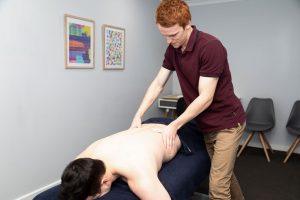 For many people, postural pain can become a recurring annoyance and can affect more than just your work. We believe in long term success and therefore adopt an holistic approach to your injury by not only treating your pain, but also addressing the root cause of your problem. This will reduce the likelihood of pain returning in the future so that you can live a healthy and active life moving forward.
For many people, postural pain can become a recurring annoyance and can affect more than just your work. We believe in long term success and therefore adopt an holistic approach to your injury by not only treating your pain, but also addressing the root cause of your problem. This will reduce the likelihood of pain returning in the future so that you can live a healthy and active life moving forward.
SO WHY SHOULD I SEE AN OSTEOPATH FOR MY POSTURAL PAIN?
Everyone’s pain is different and everyone has different goals they aspire to achieve. We strive to treat the person, not just the injury. Whether your goals are to run marathons, muck around with the kids or enjoy your time in retirement, we take them very seriously (whilst always having a laugh in the treatment room at the same time!). These goals help us form the basis of our individualised management plan to ensure that together we are able to get you back doing the things that you love.
IF YOU’D LIKE TO KNOW MORE ABOUT POSTURAL PAIN, READ SOME OF OUR GREAT BLOGS BELOW:
https://www.pakenhamosteopathy.com.au/posture-and-ergonomics/
https://www.pakenhamosteopathy.com.au/workers-urged-to-stand-up-for-their-health/
https://www.pakenhamosteopathy.com.au/back-pain-pakenham/
https://www.pakenhamosteopathy.com.au/avoiding-neck-pain-back-pain-at-your-desk/

